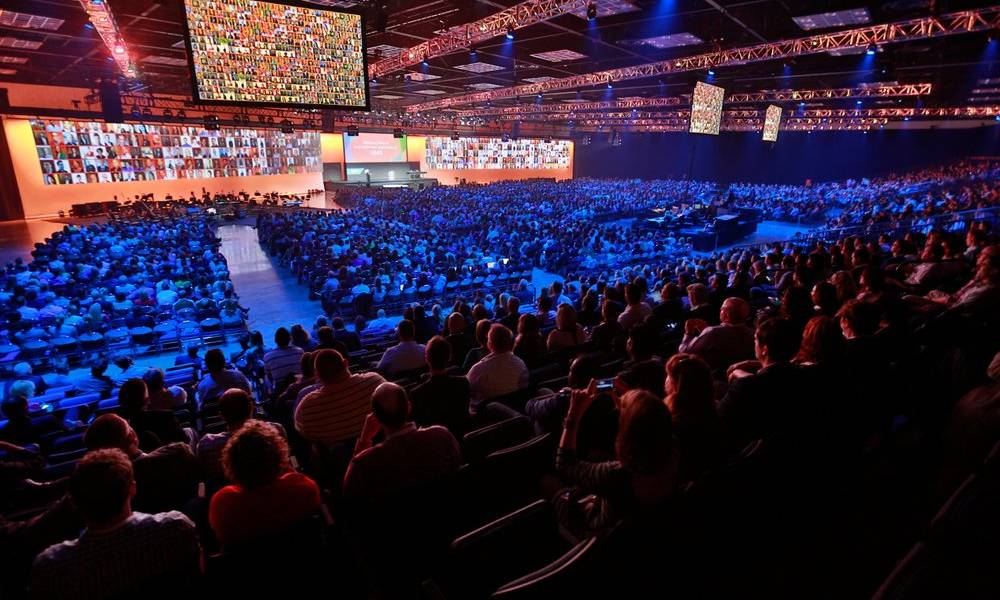
3 Tips to Best Determine the ROI of Your Meeting
A flagship event may be tradition, but is your annual conference still providing measurable ROI for your organization?
Many organizations hold an annual conference or flagship event year after year. But how often do you ask yourself why you’re hosting the event? Your reasons should be more than you’ve done it for years and that’s what attendees expect.
To create a successful meeting, you need to know how to measure and understand the return on investment (ROI). It is critical to ensure your meeting strategy and goals align with your organization’s overall business strategy. To do that, you need to establish measurable objectives and develop a detailed, written plan for how to measure those goals.
“The ROI helps us lay out where we need to be as an organization and where the event needs to be to meet the needs of the future attendee,” says Mandy Hazlett, CMP, senior event manager at the National FFA Organization in Indianapolis.
The National FFA Convention & Expo is the flagship event for the National FFA Organization. In 2017, the event saw a record attendance of over 67,000. This year’s event will be held in October in Indianapolis. Attendees will include current FFA members (high school students), collegiate members, educators and chapter advisers, alumni, corporate supporters, individual donors and exhibitors.
Hazlett recommends analyzing your meeting ROI in three key areas:
1. Financial Measurement
Determine indirect, fixed and variable costs. How can you keep costs down—for your organization and your attendees—while still creating a high-quality meeting? Hazlett analyzes the overall costs but also digs deep to determine costs for each portion of the meeting. This tells her what produces revenue and/or provides value to attendees.
“If I come in under budget overall, yes, that is great and has met a goal, but I also need to know at each event where potential revenue is hitting [its] goals,” she says. “If it’s not, then [we need to look] into why it did not meet the revenue goal.”
And remember, your local convention and visitors bureau (CVB) and destination management company can provide loads of local suggestions, contacts and marketing support. Visit Indy’s veteran staff of convention services managers and marketing staff work closely with conference organizers, including Hazlett and her local organizing committee, to drive attendance and ensure success on multiple levels.
2. Engagement
Sending attendees a post-conference survey is a traditional way to measure engagement. But look for other on-the-spot and creative ways. Send real-time questions about sessions and events via the conference app, include a survey on the app and ask people their thoughts via social media.
Paying close attention to social media buzz during the event is critical—as is responding to questions and complaints. Social media measurements can include way more than the number of shares and tweets. Keep track of the conversations and what attendees are saying about your event. Analyze what type of attendees were more apt to use social media. Calculate conversion rates: If you asked social media users to take a particular action—use a poll, sign up for an event—how did they respond? Visit Indy’s services and marketing team monitors conference hashtags as well, to serve as a customer service aid, promptly answering attendee questions about the city.
Going back to the post-conference survey, when was the last time you evaluated your questions? Start over and develop questions that align with your meeting and business objectives and help you truly gather the critical information you need to know.
And don’t be all digital all the time if it’s not appropriate for your attendees. The National FFA Organization discovered that a new app survey about its career exploration tours did not yield as many responses as the former paper surveys. Staff learned that the paper form offered convenience—it was on the bus seat waiting for the tour guests after each event and few wanted to be that person who didn’t turn in the form to the tour guide as they got off the bus. So, National FFA went back to the paper forms.
3. Value and Relevance
You may continue to hold an event year after year, but do you know its true value and relevance for your attendees? What do you want them to learn and take home with them? What can you offer that will make them determined to come back next year?
“If your event is no longer of value and is not relevant to your attendees, it doesn’t matter how great the food was, they may not return,” Hazlett says. “Their entire experience starts with the first time they see information about your event to the follow-up post event and everything in between.”
Be sure to evaluate value and relevance for each segment of your attendees also—student members are a lot different from seasoned professionals. Again, surveys, polls and engagement measurements can help you determine value and relevance.
It’s also helpful to share the data you collect with your future host destinations—or in National FFA’s case, its annual home of the event—so that CVB staff can partner on solutions and suggest venues, activations, speakers and more to meet your organization’s goals.
Hazlett is able to help create a worthwhile meeting for the National FFA Organization by methodically examining her organization’s five-year business strategy every year and aligning the meeting goals with it.
“The meetings and event industry is thriving, and the value of meeting face-to-face is regarded highly. Don’t let that not be seen within your own company or organization,” she says. “Build your meeting strategy to align with your company or organization’s goals, show how you can provide ROI numbers and data by having your measurement plan in place, and build a multi-year plan that can help with growth and success.”
Visit Indy proudly serves as the official sales and marketing organization for USA Today’s “#1 Convention City in the U.S.” Learn more at VisitIndy.com





